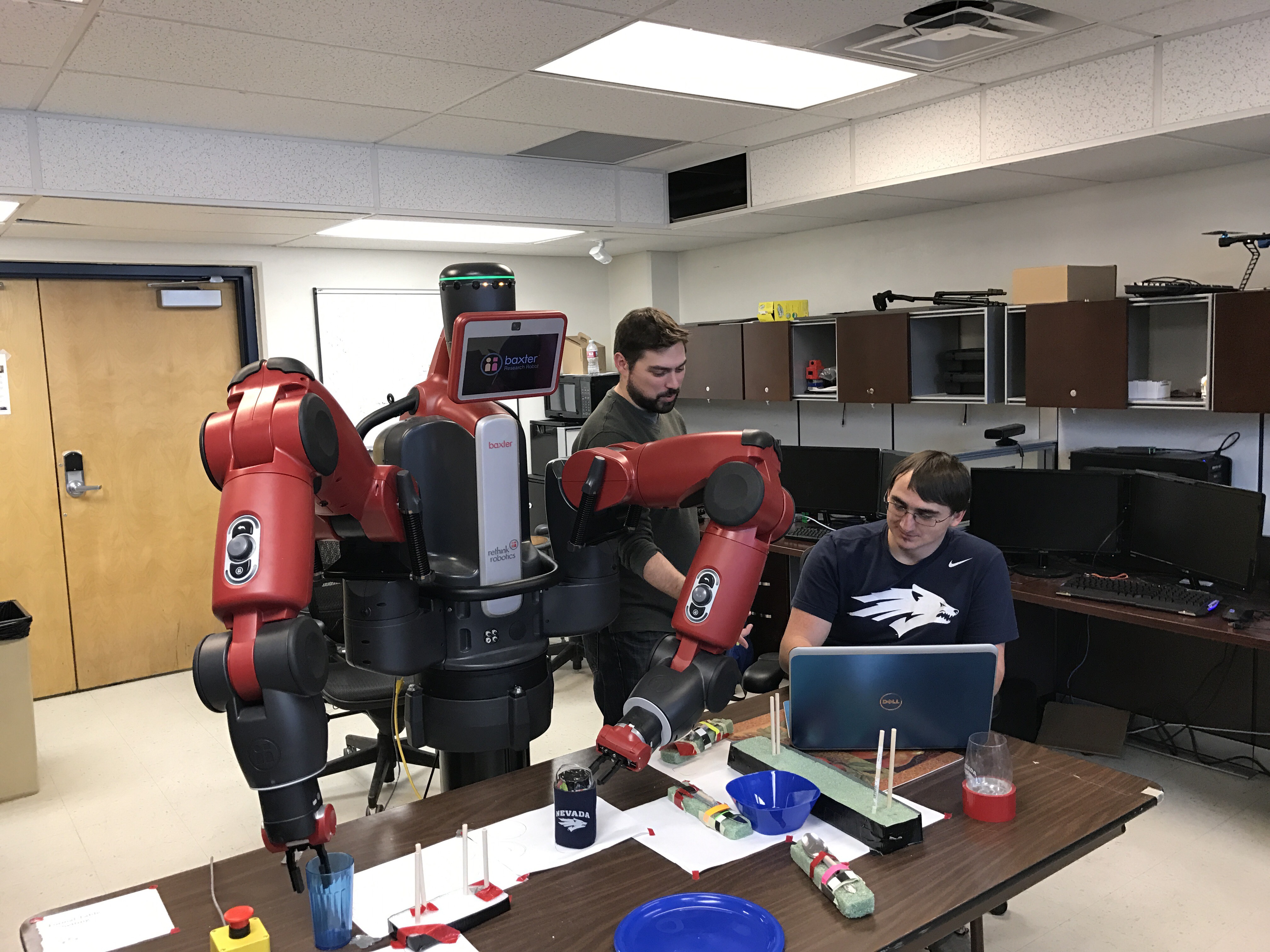Empirical Study of Socially-Appropriate Interaction

In order to explore the nature of collaborative HRI for long-term interaction, REU participants will work with project personnel to develop controlled experiments which isolate individual aspects of collaborative HRI such as conformity, honesty, mistreatment, and deference. Students will examine these factors in a single-session experiment that they design. The results from these experiments will be used to focus multi-session follow-up studies that will be conducted in-between summers. The results of this research project will be a compendium of data demonstrating how humans and robots interact in situations of daily life, such as manufacturing, education, and daily living.
People
- Director: Dr. David Feil-Seifer
- Mercedes Anderson
- Dr. Santosh Balajee Banisetty
- Prof. Kimberly Barchard
- Andrew Palmer
- Vineeth Rajamohan
Publications
- Carlson, Z., Sweet, T., Rhizor, J., Lucas, H., Poston, J., & Feil-Seifer, D. Team-Building Activities For Heterogeneous Groups of Humans and Robots. In International Conference on Social Robotics (ICSR), page 113-123, Paris, France, Oct 2015. ( details ) ( .pdf )
- Carlson, Z., Lemmon, L., Higgins, M., Frank, D., Salek Shahrezaie, R., & Feil-Seifer, D. Perceived mistreatment and emotional capability following aggressive treatment of robots and computers. In International Journal of Social Robotics (IJSR), 11(5):727-739, Oct 2019. ( details ) ( .pdf )
- Sebastian, M., Banisetty, S., & Feil-Seifer, D. Socially-Aware Navigation Planner Using Models of Human-Human Interaction. In International Symposium on Robot and Human Interactive Communication (RO-MAN), page 405-410, Lisbon, Portugal, Aug 2017. ( details ) ( .pdf )
- Banisetty, S., Sebastian, M., & Feil-Seifer, D. Socially-Aware Navigation: Action Discrimination To Select Appropriate Behavior. Poster Paper in Annual Graduate Poster Symposium (GSA), Nov 2016. ( details ) ( .pdf )
- Poston, J., Lucas, H., Carlson, Z., & Feil-Seifer, D. Does the Safety Demand Characteristic Influence Human-Robot Interaction?. In International Conference on Social Robotics (ICSR), volume 9979, page 850-859, Springer International Publication. Nov 2016. Springer International Publication. ( details ) ( .pdf )
- Miller, B. & Feil-Seifer, D. Embodiment, Situatedness and Morphology for Humanoid Interaction, page 1-23. Springer Netherlands, Mar 2017. ( details ) ( .pdf )
- Rajamohan, V., Scully-Allison, C., Dascalu, S., & Feil-Seifer, D. Factors Influencing The Human Preferred Interaction Distance. In IEEE International Conference on Robot and Human Interactive Communication (RO-MAN), New Delhi, India, Oct 2019. ( details ) ( .pdf )
Support
- CHS: Small: Socially-Aware Navigation, National Science Foundation PI: David Feil-Seifer, Co-PI: Monica Nicolescu, Amount: $500,000, Sept. 1, 2017 - May 31, 2022
